Not a single, both small and industrial enterprise for the production of steel products and woodworking is complete without milling machines. The milling process is the first and key process in the processing of steel and wood blanks.
The most popular among this category of units are horizontally milling machines.
1 Features of horizontal milling machine
Horizontally- milling machine- one of the first units used for processing metal blanks and various works on wood. With their help, milling, boring, grinding, and sometimes drilling are performed. However, the equipment and specifications similar units are approximately the same.
The main feature of the horizontal cantilever milling device is the horizontal position of the spindle. The working surface itself can move at different angles relative to the cutter.
Horizontally milling machine, like other industrial units, has not bypassed technical progress. In addition to the usual machines, where the operator performs all the work with the cutter, new units for metal and wood with CNC appeared(numerical program control).
Such a device does not require operator intervention in the process of processing workpieces. The operator of CNC machines must have the skills not so much to work with metal or wood as knowledge in the field of computer technology and programs.
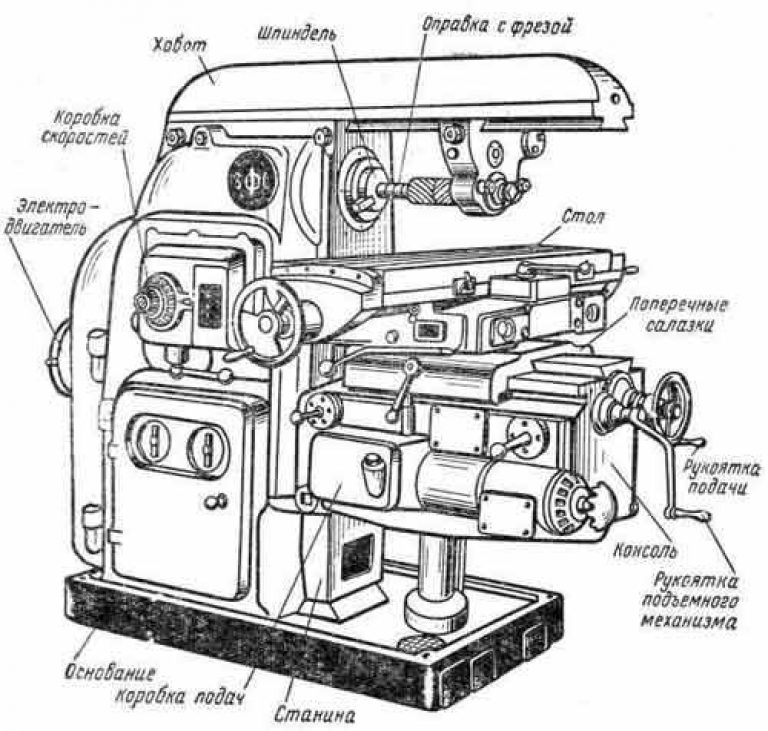
A 3D model of the future part is created on the computer, the trajectory of the cutter and other technical characteristics are drawn, the program is transferred to the machine, and the machine performs all work on processing the workpiece under CNC control without human intervention.
1.1 Basic equipment
At its base, this device has a frame on which the rest of the working elements of the unit are located. The frame must be as strong and vibration-resistant as possible, therefore it is made of cast iron or high-strength steel.
The following components and mechanisms are installed on the frame:
- Transmission. With its help, the speed of rotation of the cutter is adjusted;
- console. Device for moving the working surface of the console-milling unit along vertical guides;
- Desktop. This device is equipped with clamping mechanisms or a vice for setting workpieces for metal or wood. The desktop of the console milling machine is made in such a way that it can be moved in three directions: longitudinally along the guide rails; transversely by moving the slide itself along the console guides; vertically, by moving the cantilever-support mechanism along the bed guides;
- spindle. The main rotating device, on which there is a mandrel for fixing cutters;
- trunk. Housing element on which the suspension with a spindle is attached;
- the milling mandrel is attached to the end of the spindle;
- engine. Industrial units are equipped with a three-phase motor, household units are equipped with a two-phase motor. Engine power must be at least 1200-1500 W, to achieve the desired spindle speed. Horizontally milling machine for metal or wood must maintain a speed of rotation of the cutter from 400 to 4500 rpm;
- optional equipment. In addition to the equipment listed above, the machines can be additionally equipped with CNC boards, chip blowers, magnetic tables for clampless clamping of workpieces.
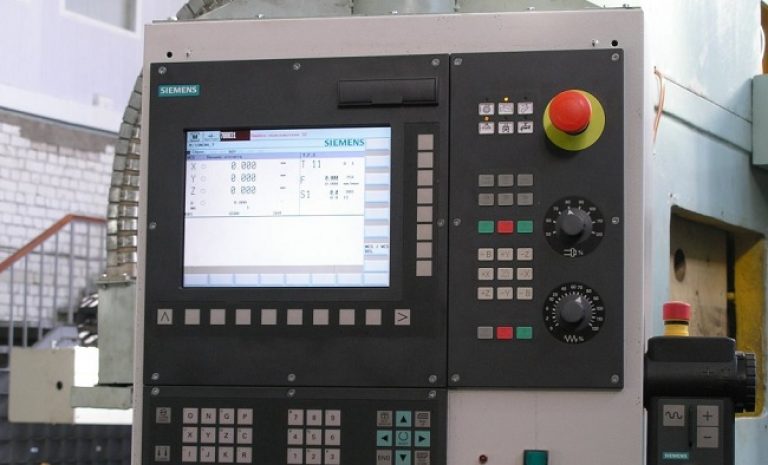
1.2 Cutters
It is very important that the horizontal milling machine allows quick change of cutters, since each cutting tool performs only its narrow-profile function. In addition, the attachment of the cutter should be as rigid as possible.
Any vibration or bending of the cutting tool will lead to damage to cutters and workpieces when working on metal or wood. For the strength of the cutter, the mandrel must be mounted on a hanger. The fastening itself is made using rings and nuts.
- processing of horizontal surfaces by a milling machine 6r81, and its other analogues, is performed using a cylindrical cutter;
- the device performs vertical work on metal or wood with the help of end or disk cutters;
- combined processing requires the change of several cutting tools with different functionality.
To improve the accuracy of milling work on metal or wood, a 6m82 milling machine It is recommended to equip with a CNC board.
2 Types of machines
Note that console milling machines are both domestic and professional. They allow you to process workpieces weighing from a few grams to thousands of kilograms.

Based on the size of the equipment, console milling machines for metal or wood are divided into three groups:
- the first group - light equipment weighing up to 1 ton;
- the second group - medium equipment whose weight is in the range from 1 to 10 tons;
- the third group - heavy units, weighing from 10 to 100 tons;
- There is also a fourth group special machines whose weight exceeds 100 tons.
Any of the above units can be equipped with CNC.
The second criterion for dividing console-milling units into groups is the control method. The machine control can be manual, semi-automatic or CNC automatic.
- Manually operated machines require full control from the miller. He must install the workpiece, turn on the machine, bring the cutting tool, adjust the trajectory and speed of the cutter, turn off the machine, remove the part.
- Semi-automatic devices are configured to perform a specific cyclic task. The operator sets the workpiece and starts the machine. The unit automatically performs the programmed cycle and stops. The worker must then remove the part from the latch and turn off the machine.
- Automatic units are equipped with CNC. In this case, the milling machine must be able to use not so much the machine as the computer and related programs. Its task is to create a 3D model of the future part and draw the trajectory of the cutter, as well as other technical specifications machine work. After transferring the numerical code to the machine, installing the workpiece and starting the unit, he will independently perform all the work. The task of the operator is only to observe his work.

2.1 Rules for the operation of horizontal milling units
V technical passport for any model of a console milling machine, the rules for its installation, assembly, and operation features are prescribed. However, there are also general rules relating to any type of manual or CNC equipment. These requirements relate to the organization of the technical process and the observance of safety rules by workers.
The first task of a production engineer is to correctly select and prepare the installation site for the unit. It is selected depending on the dimensions and weight of the machine. It is also important to have vibration compensation for the unit from the side of the platform on which it is installed. The floor under the machine must be rigid, usually it is poured from durable reinforced concrete. Additionally, supports with compensation cushions can be installed.
assembly and Maintenance any assembly must be carried out by a specialist. Operation of the unit with the slightest technical malfunctions strictly prohibited!
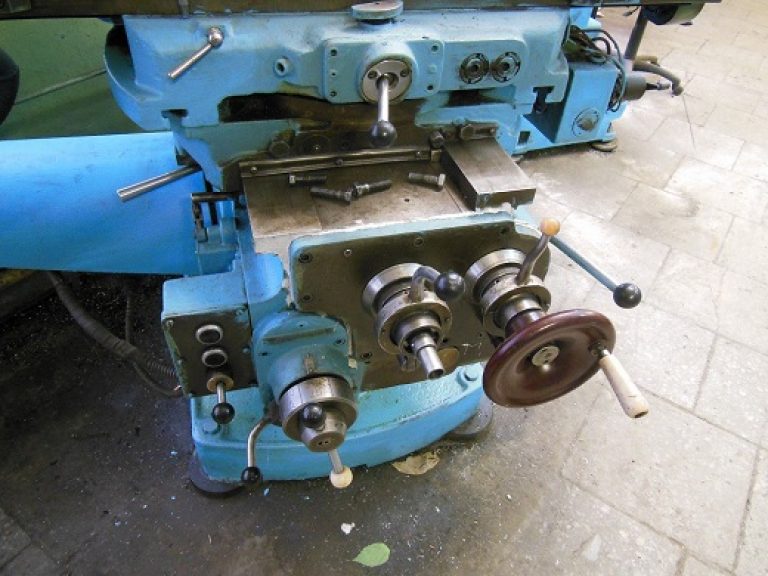
Also, the general operational requirements of horizontal milling machines include:
- Operator of a horizontal milling unit must work in special clothing. Using the same protective gloves or gloves is strictly prohibited.
- All work on the machine must be performed by the milling machine in protective glasses.
- If the workpiece for milling weighs more than 20 kg, it is installed on the work table using lifting mechanisms.
- If abnormal vibration or oscillation occurs, the machine must be stopped immediately. Most often, such a violation in the work is caused by improper installation of the cutter.
- Often, on devices of a horizontal milling type, an additional chip blower is installed. But even in this case, the worker must carefully clean the machine from chips and dust.
Horizontal milling machines differ in design, they can be single-column and double-column, console and without console. CNC machines, as a rule, have a rotary table, a certain trajectory of movement of which is set by the embedded program.
Horizontal milling machines - machines with a horizontal spindle, as well as having the ability to move the table in three mutually perpendicular directions.
The basis of the horizontal milling machine is the bed, on which all the nodes and mechanisms of the machine are located:
- gearbox;
- the console moved along the vertical guides of the bed;
- a table for installing a blank inserted into a special device or fixed in a vice installed on it. the features of the milling machine table are that its movement can occur in three directions
- longitudinal movement occurs along the guide rail;
- lateral movement is obtained by moving the sled itself along the console guides;
- The table receives vertical movement when the console moves along the frame guides.
- spindle - the main rotating part in the machine mechanism;
- a feed box located in the console;
- a trunk that serves to fix the suspension;
- the milling post is supported by the hanger end.
Universal machines are called horizontal milling machines with a rotary plate, thanks to which the desktop can turn from a horizontal surface into an inclined one. These machines can also be equipped with CNC, but this will not speed up, but rather slow down production due to the fact that reprogramming the machine will take a lot of time.
Layout of horizontal milling machines Kinematic diagram 6Р81 Device of a horizontal milling machine
Cylindrical cutters are used to process the horizontal plane of parts. Vertically, metal blanks are turned with face or disk cutters. If necessary, combined processing of the workpiece, several different milling cutters are used. The accuracy of the task is directly dependent on the stability of the cutters in the mount along the length of the shipment. Suspensions help to increase the rigidity of the mount. But not a single additional support will give sufficient stability to the cutter when its diameter increases beyond the standards specified by the machine manufacturer. The most accurate execution of the work will be if the machine is equipped with a CNC.
The rigidity of horizontal milling machines for metal increases with the improvement of the frame design, the installation of an additional bracket, and the strengthening of the table. Work performed on lathe for metal, can also be produced on horizontal milling equipment using special milling heads. Installing the CNC on the machine is always accompanied by strengthening the structure.
In the classification, horizontal milling machines are assigned to the sixth group, but some of them may also belong to the fifth as gear-cutting and thread-cutting equipment. CNC is more often installed on machines of the 6th group. Group 5 equipment is not designed to perform particularly precise tasks. CNC here can only be installed to speed up production, if necessary, process identical workpieces in in large numbers.
According to the classification table of turning equipment for metal, machines are divided by weight:
- Group 1 - light, weighing up to 1 ton;
- Group 2 - medium, whose weight does not exceed 10 tons,
- Group 3 - heavy. This group is divided.
- Large - from 10 to 30 tons;
- Heavy - from 30 to 100 tons;
- unique, over 100 tons in weight.
Any equipment for metal can be equipped with CNC.
The second criterion for the division of equipment is automatic, semi-automatic or manual control of the machine. With manual control, switching on, stopping, approaching a tool, adjusting feeds and speeds, installing parts and removing them from the working surface is carried out by a turner.
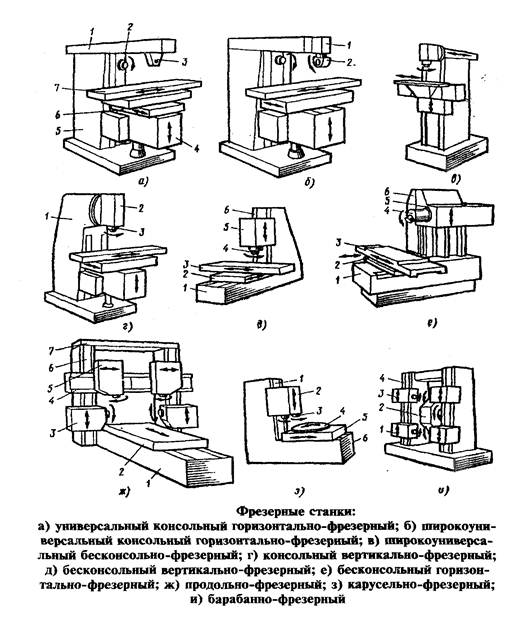
Semi-automatic is configured for a specific processing cycle. The worker needs to install the workpiece, fix it and press the start button. After the completed cycle, the rotating spindle will automatically stop. The turner will need to remove the finished part, insert the next workpiece, and start the machine again.
When working on automatic equipment, the turner gets the role of an observer and debugger of equipment. CNC for machine tools may be different, but all processes for the manufacture of parts occur without the direct participation of the operator.
Affects the column in which the equipment is distributed in the classification table, the location of the spindle, its position is reflected in the name and marking - inclined, vertical, horizontal.
The division into subgroups occurs according to the processing parameters in the 2-plane or 4-coordinate mode. Also reflected in the position in the table and its ability to process one or more parts at the same time. The presence in the design of the CNC machine does not matter per subgroup in the classification table.
Multi-tool horizontal milling machines have several cutters that simultaneously process the surface of one part from different sides, and multi-position machines process several workpieces at once. Both types of equipment work more productively with CNC.
Application
On horizontal milling equipment for metal, key grooves are made in blanks. They can be done in several ways, depending on the tool used on different equipment - vertical milling machines or general purpose equipment used to carry out diverse metal work.
Machining splined surfaces Milling a splined shaft Cutting a splined shaft
Splines on shafts up to 100 mm in diameter are made in one milling cycle. On wider shafts, this operation can be carried out in two passes. Dividing mechanisms are necessary for rough milling. They are available on horizontal milling machines, which makes this equipment more convenient for processing shafts with a large diameter.
Choice of cutter for work
Longitudinal milling can be carried out by multi-spindle horizontal milling machines for metal using various cutters installed in the turret. When processing metal parts Several different cutter tool installation can also be carried out in sending, and further into the spindle.
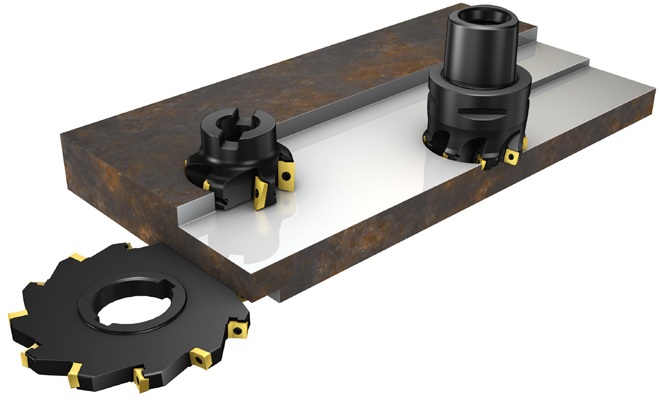
Three-sided disc cutters are used for turning keyway through grooves. To achieve greater accuracy, it is better to do this work in one go. If it is necessary to create a wide groove in one step, it is difficult to carry out this operation. The second, finishing pass will be made with a cutter with a large diameter. The cutter will be securely fastened when it is installed in a spindle with two supports.
There are machines designed to work with only one or several types of cutters. Horizontal milling machines, designed for work with disk and cylindrical cutters, have the additional possibility of using end mills, which somewhat increases the scope in which this equipment is used.
Machine marking
Milling machines often have a narrow specialization, which is reflected in the marking. The first digit is the group to which the machine belongs according to the classification table. The 2nd digit indicates the type of equipment:
- 1 - vertical milling cantilever;
- 2 - continuous action - working on the stream. They produce the same parts.
- 3 - copiers work on a stencil fixed on the frame above the working part;
- 4 - engraving;
- 5 - vertical consoleless have a cross table;
- 6 - longitudinal milling machines do not differ in a wide range of possibilities, they are used in mass production;
- 7 - wide-universal have a lot of possibilities, which makes them excellent equipment for workshops and small-scale piece production;
- 8 - cantilever-horizontal;
- 9 - different.
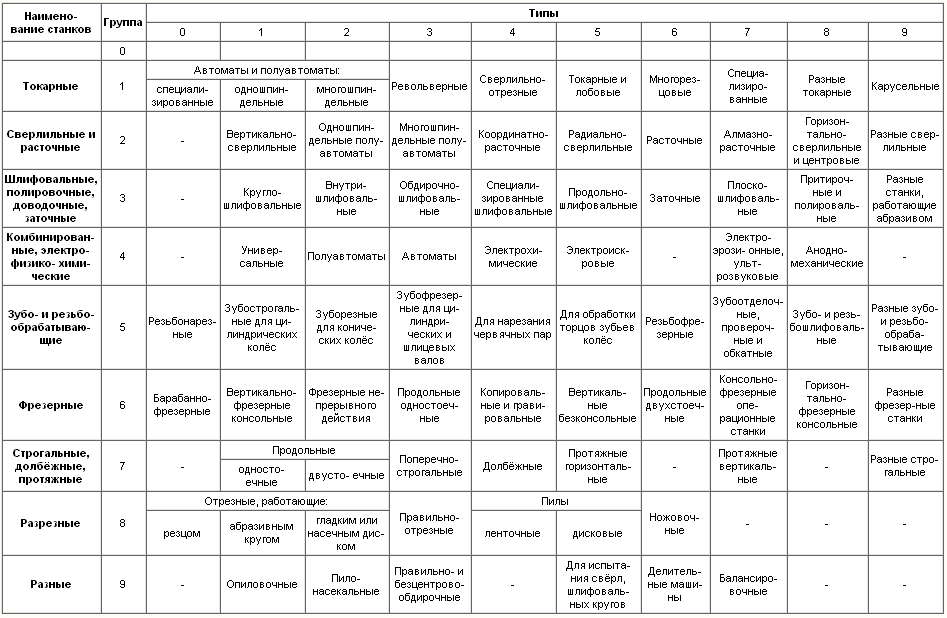
The third and sometimes the fourth digits indicate the dimensions. The letter between 1 and 2 numbers indicates that this is an upgraded model. If the letter is at the end of the marking, then it indicates the characteristic of the upgrade of the base model. The letters P, B, A, C - indicate the accuracy class. Ш indicates the wide versatility of the model, which, in addition to the horizontally located spindle, has a trunk with a vertical head. G indicates that this machine is a horizontal milling machine.
If you find an error, please highlight a piece of text and click Ctrl+Enter.
In the manufacture of various metal parts, it is almost impossible to do without the use of. What is convenient, a milling machine for metal work is equally successfully used both in production conditions and in home workshops. It should be noted that the equipment of this category is the most common in the field of metalworking.
Almost all modifications milling equipment work on a similar principle and have a similar design. The differences between the models of such machines may lie in their functionality, which is formed by adding additional components and systems to their design.
Varieties of milling machines
We list the main types of milling machines, each variety of which sometimes differs significantly from its counterparts and has a lot of differences in design and in its working purpose.
Vertical millingA fairly common type of machine in this category is a vertical milling machine. The working tools for such machines are shaped, cylindrical, end mills, and drilling operations can also be performed. A vertical milling machine allows you to perform the following technological operations: processing gears and various grooves, corners, frame elements, vertical and horizontal surfaces on parts made of various metals.
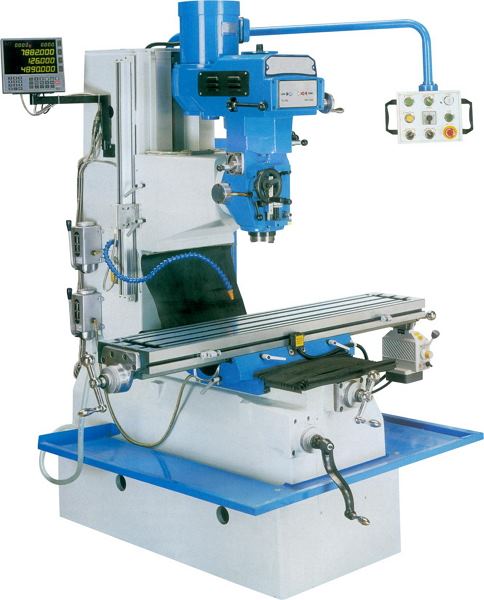
Milling machines of this type do not have a console in their design, and their desktop moves along guides located on the equipment bed. The vertical type machine, due to the peculiarities of its design, is characterized by high rigidity, which makes it possible to process metal parts on it with high level quality. The gearbox of such a milling machine is located in the spindle head.
Vertical milling machines are divided into two categories, distinguished by the presence of a console in the design. Their names are respectively:
- consoleless vertical milling machines;
- vertical console milling machines.
With the console, it differs in that its spindle and sleeve can move relative to the axis of the equipment. The differences in their design can be clearly seen in the photo.

Horizontal milling
The horizontal milling machine is notable for the fact that its spindle is located in a horizontal plane. The equipment of this group allows you to process parts that have small dimensions. The versatility of this machine is ensured due to the fact that it uses cutters of end, cylindrical, shaped, end and angular types as a working tool. The horizontal milling machine in its standard configuration does not allow processing the part along the helical surface, for this it must be equipped with auxiliary devices.
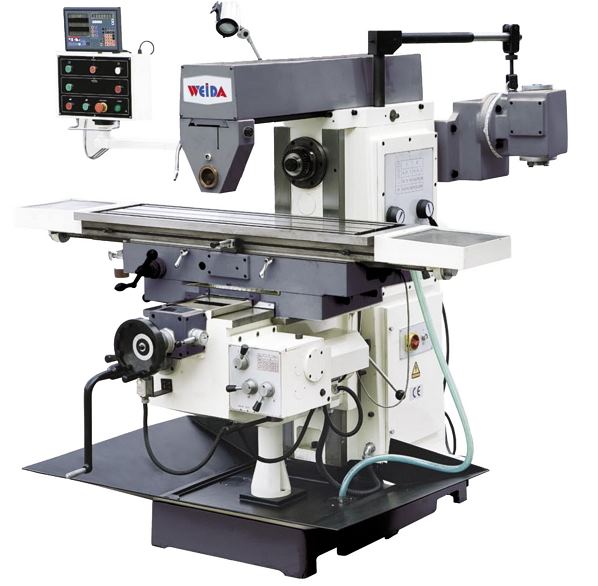
The device of the machines of the horizontal milling group allows you to install their desktop in parallel, as well as perpendicular to the spindle axis. All working and power units of this equipment are located on the frame, and the gearbox, which controls the speed of rotation of the spindle, is located in its inner part.
Drilling and millingMachines belonging to the category of drilling and milling are designed for processing not only horizontal and vertical surfaces, but also inclined ones. They are also used to process the grooves of large-sized parts.
Such a milling machine for metal has a drilling-milling head that allows you to perform drilling operations at an angle and machine surfaces located at an angle to the horizontal axis. A distinctive feature of such a machine is that its working head can operate in reverse mode.

Due to their versatility, due to the ability to carry out the two most popular operations, such machines are very beneficial from an economic point of view, as well as in terms of saving space on the production area. Few of the home craftsmen will refuse to have such a machine at home, since such an apparatus combines several effective and useful devices in its design at once.
UniversalSuch metalworking machines are very convenient to use to equip private workshops or medium-sized workshops specializing in mechanical repair work. Universal machines allow processing of horizontal and vertical planes, as well as surfaces of a spiral type and stamps.
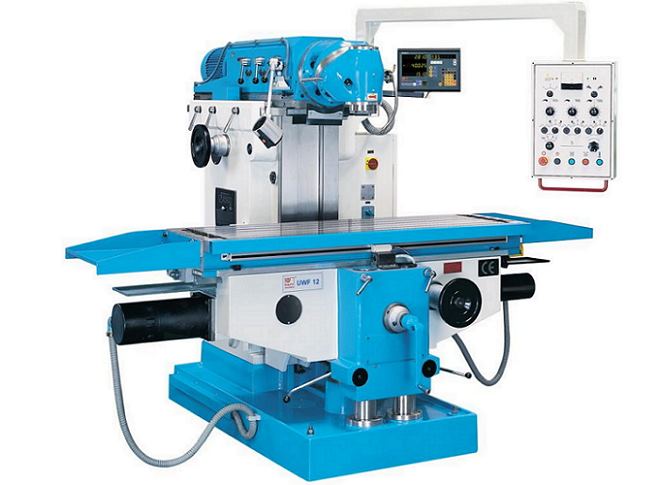
Such a machine for metal differs next design features: spindle assembly, box, as well as the main nodes are located in the inside of the frame. The design of the machine provides vertical and horizontal guides along which its console and desktop move. The working surface, in addition, can be set in relation to the equipment spindle at the desired angle, which makes it possible to process metal parts with even the most complex configuration with it.
Desktop
Such a very compact equipment installed at home, in workshops, educational institutions and in small production workshops, allows you to perform various technological operations: cut threads, drill holes, process all kinds of parts and materials various types cutters and more.
This type is distinguished by good accuracy, since their design has exceptional rigidity (of course, with competent installation). Such console milling machines are distinguished by high productivity, which makes it possible to use them for the production of products in serial batches. Despite their high performance and wide functionality, such machines are distinguished by low power consumption and compact size, which allows them to be conveniently placed even in a small area.
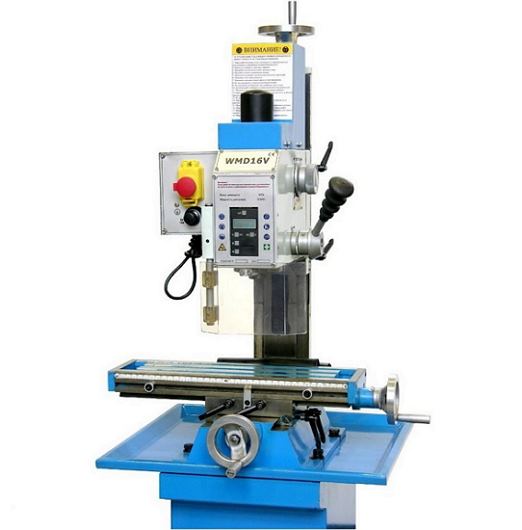
Such devices are actively used in various industries in the mass production of high-quality parts. CNC machines are highly productive and capable of providing unsurpassed quality not in a single copy, but on a stream, which makes them indispensable equipment in any serious production. The differences between such machines and all other types of milling machines are so significant that they require a detailed analysis in a separate article.
CNC machines that process parts from various metals with high productivity and accuracy have one big drawback: a decent cost, but it is fully compensated by the following positive factors:
- reducing the need for qualified specialists in production;
- high productivity relative to manual machines;
- term reduction production cycles;
- accelerate the transition to the production of new products.
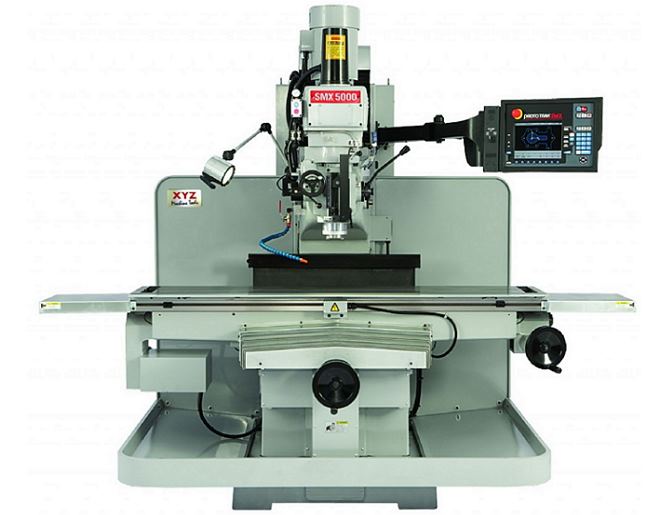
The difference between such devices and the previous type of milling machines lies in even greater versatility, even higher accuracy and speed. The range of work that such devices can perform includes a huge list of operations and processes that are in demand in the most high-tech and responsible industries. Modern software for machining centers is produced by large global companies. The work of machining centers will be discussed in detail in a separate article.
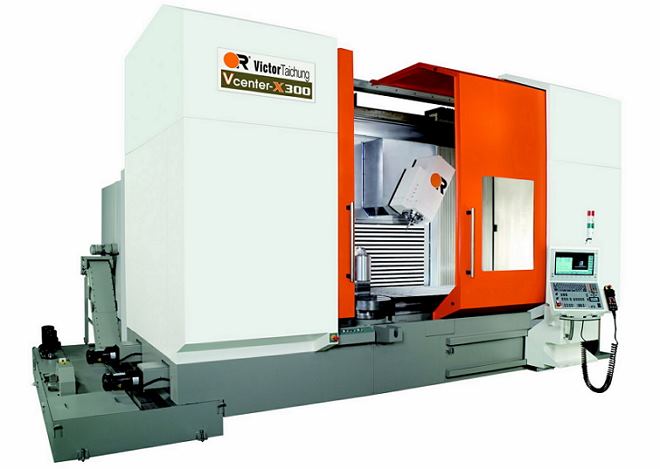
Desktop CNC
A separate category is made up of types of milling machines equipped with CNC (computer numerical control). Such equipment belongs to the category of professional, its operation is controlled by special controllers that must be connected to a computer device. Like other types of milling machines, CNC models can perform various technological operations on metal: drilling, countersinking, boring, etc.
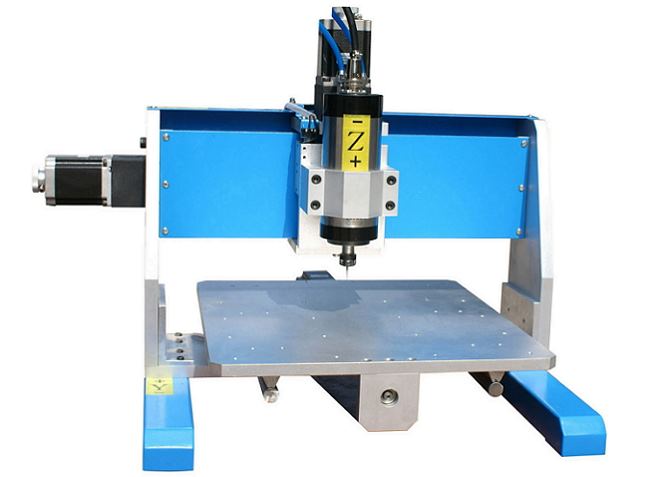
Having at your disposal such a machine, you can perform any kind of milling operations with almost any material. If we compare a horizontal milling machine and a universal type machine, then its main difference is that its design provides for an additional spindle head, which is mounted on a special movable trunk and can be rotated at any angle with respect to the workpiece.
Conveniently, both spindles of such a machine can process parts both jointly and offline. Another overhead milling head can also be installed on the swivel head, with which you can process metal parts of an even more complex configuration - drilling, boring, countersinking, and so on.

There are also models of wide-purpose machines that do not have a console panel in their design. Instead, a carriage is installed that moves along vertical guides. On the vertical slide of this carriage, various devices can be used (for example, a dividing table). Such machines are somewhat cheaper, but are also capable of performing a fairly large list of technological tasks.
When choosing a milling machine, first of all, you need to decide what it is for. This approach to choosing equipment will give you the opportunity to purchase it in full accordance with your needs, and also not to overpay for features that you will never need.
The principle of operation of milling machines
Almost all milling machines work on the same principle. Differences can only be in their functionality.
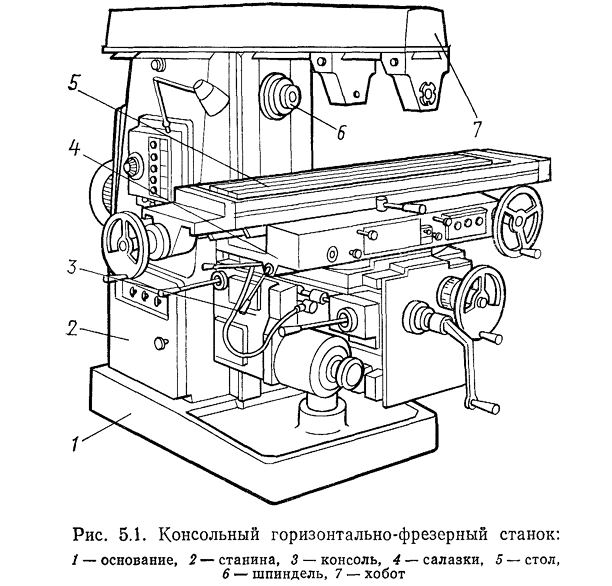
Main structural elements such machines are: a supporting frame, a work table, clamping elements, a collet and a collet chuck in which a working tool is fixed, a portal with a spindle fixed on it, which can move, a drive motor.
The working tool of any milling machine is a cutter, the design and dimensions of which depend on the configuration of the part to be processed. The working tool is fixed in the collet chuck with the help of a shank, and the rotation is transmitted to it from the drive motor through the gear system. The main purpose of the cutter is to remove an excess layer of metal from the workpiece, which, in fact, is the essence of processing on such a machine.
The machine spindle is located on a movable portal, the movements of which are controlled by special controllers, if we are talking about CNC equipment. Electronic system such equipment includes CNC controllers (numerical program control), auxiliary elements of the system and connecting parts. The principle of operation of CNC machine models is as follows: a special program reads the drawings of the part to be obtained as a result of processing, generates electronic commands that are transmitted to the working body of the machine.
Special attention should be paid to universal machines, which are a hybrid of horizontal and vertical models. Their design also has a collet, collet chuck and clamps, but the gearbox of such machines transmits all movements from one electric motor. Their distinctive feature is the presence of a manual mode, with which you can control the operation of the running block.
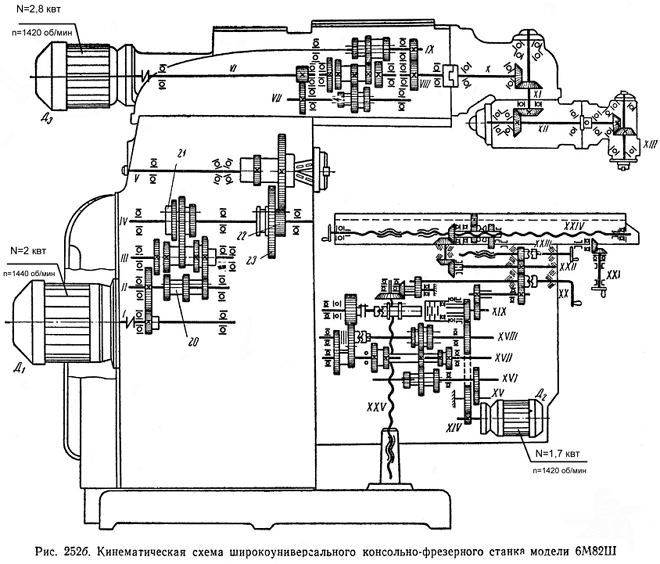
Example of a kinematic diagram (cantilever milling machine)
Additional elements have five-coordinate and engraving equipment in their design. Such equipment is equipped with additional clamping elements that allow you to install an engraver on it. The tool of such equipment rotates due to the cardan shaft, with which it is directly connected to the electric motor.
The simplest in design are manual milling machines for metal. Such equipment has low power, and its design consists of a collet with a collet chuck, a rotor, a drive head and an electric motor. Naturally, the functionality of such a machine is also limited: it can only be used to perform the most simple milling operations.
The resource of work, which the machine of the milling group of a manual type has, is also low and amounts to no more than 10,000 hours. The weakest components in such equipment, which are the first to fail, are the collet and collet chuck, clamps, attachment and spindle. But its low reliability and durability is fully compensated by the low cost. It makes sense to acquire it if you plan to use it irregularly.
Machine cost
The classification of milling machines according to their cost is quite extensive. Naturally, the cheapest models on this list are models from Chinese manufacturers. You can save even more on the purchase of such equipment if you buy it not through intermediaries, but directly from manufacturers. Which is convenient, manufacturers from China offer both the simplest manual machines, and professional, equipped with CNC. If we consider the minimum range of prices, then it varies between 7000-35000 rubles.
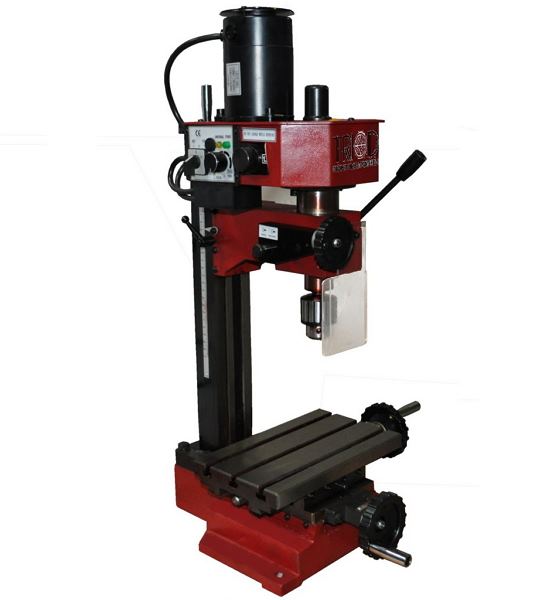
Chinese desktop drilling and milling machine Triod MMS-20E (cost about 60 thousand rubles)
It will cost you dearly enough vertical machine, the cost of such equipment starts from 20,000 rubles. Moreover, at this price you will purchase a machine with the simplest configuration: collet and collet chuck, clamps, attachment, spindle.
If you are considering purchasing for your manufacturing enterprise wide universal machine, then get ready for the fact that the price of such equipment starts from 250,000 rubles. Milling machines for metal work, which are equipped with CNC, cost starting from 2 million rubles.
In any case, if you set a goal, you can purchase a high-quality milling machine for metal of a serial model at a very attractive cost.
Horizontal milling machining centers CNC machines from HAAS allow you to successfully solve a variety of tasks, providing high performance at an affordable price. On machines, it is easy to organize multilateral processing of large parts in one setup, thus obtaining complex high-precision products with minimal cost. Another advantage of a horizontal milling machine is the effective evacuation of chips from the cutting zone.
On machines with automatic pallet change, processing can be carried out continuously, no need to stop the machine to remove finished parts and install new blanks.
All horizontal milling machines and machining centers
* Prices for machines are indicated without VAT, including delivery to the buyer's factory, including installation supervision and training
Classification of supplied horizontal milling machines
HAAS CNC horizontal milling machines supplied by Abamet can be divided into the following main types.
With automatic pallet change
This group includes machines EC-400, EC-400PP and EC-500. The work pallet can be indexed in 1° steps (basic) or work as a full 4th axis (option). The EC-400PP horizontal milling machine has a 6-pallet changer. A pallet that is not located in the working area of the machine can also be rotated for the convenience of the operator.
Without built-in pallet changer
This group includes large-sized machines EC-1600 and EC-1600ZT. The EC-1600ZT CNC horizontal milling machine has a 203mm longer Z travel. The maximum allowable weight on the desktop is 4536 kg. Optionally available is a rotary faceplate integrated into the desktop (4th axis) with a diameter of 762 mm, which significantly expands the capabilities of the machine when processing large parts from different sides.
The main advantages of CNC horizontal milling machines
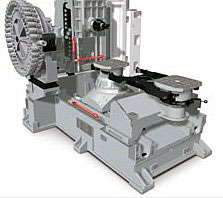 |
, processed in 1 setup from 5 sides, which guarantees high accuracy. Robust and proven design with the necessary stiffening ribs. Cast iron provides high damping capacity. |
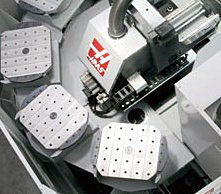 |
The design, which has been perfected by HAAS for over 30 years, guarantees accurate positioning and trouble-free operation for years to come. The design is based on a high-precision worm gear. |
 |
HAAS offers fast and reliable side-mounted automatic tool changers. All devices are completely manufactured in the HAAS factory. Changers are available for 24, 40 and 70 tools. |
What does Abamet offer and how to place an order
We offer a comprehensive approach to the supply of equipment: technological study of the request, selection necessary equipment, cutting tool, tool and technological equipment. We provide high-quality and efficient maintenance of machine tools by certified engineers. 508
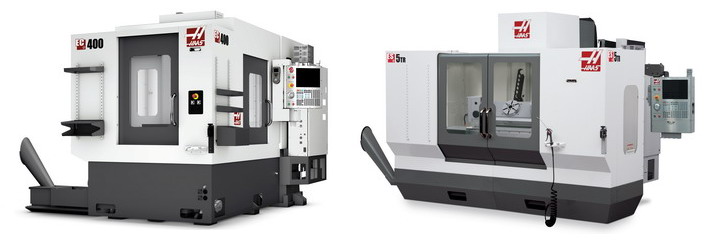











How to understand: will the kitten be fluffy?
What kind of light alcohol can be drunk for pregnant women: the consequences of drinking
Why do the legs swell in the ankles and ankles of the feet in pregnant women: causes and methods of treatment
The wedding of Prince Harry and Meghan Markle: scandalous and secret details of the marriage (photo) The future marriage of Prince Harry year NTV
How to close white plums for the winter